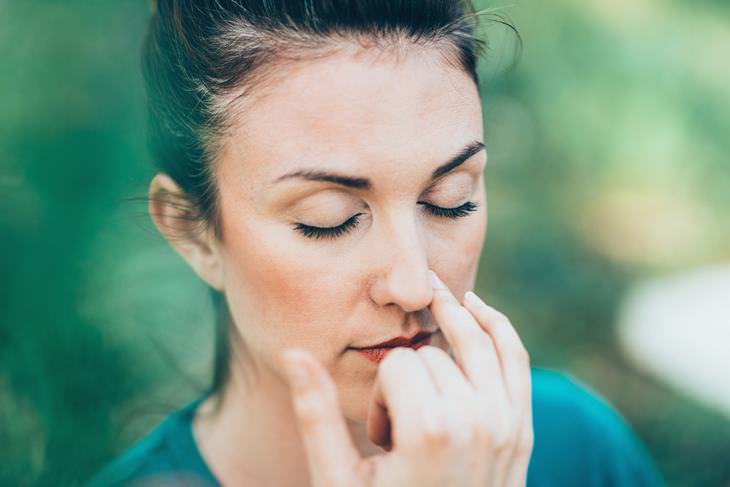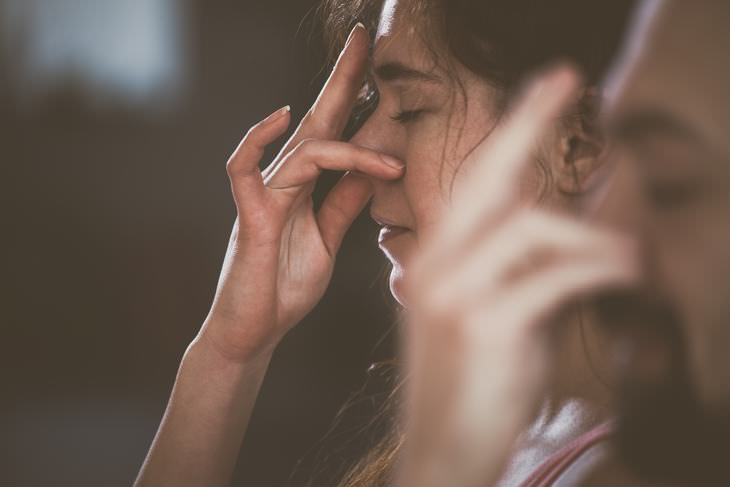
Here's what to remember before getting started:
When doing the breathing exercises, it is always good to keep your eyes closed, which may help you shut out distractions. Keep your mind focused on your breath and think about the healing power of your breath. While these nine breathing exercises each have their own pros, benefits may vary slightly. Take a look to see which is the best match for you and you'll be sleeping soundly in no time:
1. 4-7-8 breathing technique
Here is how to practice the 4-7-8 breathing technique:
1. Allow your lips to part gently, then exhale completely, making a breathy whoosh sound as you do.
2. Press your lips together as you silently inhale through the nose for a count of 4 seconds, then hold your breath for a count of 8 and exhale again for a full 8 seconds, making a whooshing sound throughout.
3. Repeat this breathing technique for a total of four times, eventually making your way up to 8 repetitions.
Benefits: This ancient yogic technique helps people relax as it replenishes oxygen in the body.
2. Bhramari pranayama breathing exercise
Follow these steps to perform the original Bhramari pranayama breathing exercise:
1. Close your eyes and deeply breathe in and out.
2. Cover your ears with your hands and place your index fingers above your eyebrows, resting your fingers over your eyes.
3. Then, put gentle pressure to the sides of your nose and focus on your brow area.
4. Keep your mouth closed and breathe out slowly through your nose. As you do so, make the humming 'Om' sound.
5. Repeat the process for a total of 5 times.
Benefits: This breathing exercise has been shown to quickly reduce breathing and heart rate, which tends to be very calming and is able to prepare your body for sleep.
3. Three-part breathing exercise
Here's what you nee to do to complete this three-part breathing exercise:
1. Take a long, deep inhale, then exhale fully while focusing intently on your body and how it feels.
2. Once you've done this a few times, begin to slow down your exhale, ensuring that it is twice as long as your inhale.
Benefits: Is one of the most simple breaths to perform and help kep the mind calm.

4. Diaphragmatic breathing exercise
To do diaphragmatic breathing exercises:
1. Lie on your back and bend your knees over a pillow or sit in a chair.
2. Place one hand flat against your chest and keep the other on your stomach, and take slow deep breaths through your nose, keeping the hand on your chest still, as the hand on your stomach rises and falls with your breaths.
3. Now, breathe in slowly through purse lips and eventually you'll be able to breathe in and out without your chest moving.
Benefits: This technique slows your breathing and decreases your oxygen needs as it strengthens your diaphragm.
5. Alternate nasal breathing exercise
Tips on who to do the alternate nasal or alternate nostril breathing exercise:
1. Sit with your legs crossed and place your left hand on your knee and your right thumb against your nose.
2. Then exhale fully and close the right nostril.
3. Inhale through your left nostril.
4. Open your right nostril and exhale through it, while closing the left. Continue this rotation for 5 minutes, finishing by exhaling through your left nostril.
Benefits: A study conducted in 2013, found that people who tried nasal breathing exercises felt less stressed afterward.
6. Buteyko breathing
To practice buteyko breathing for sleep do this:
1. Sit in bed keeping your mouth gently closed, not pursed, and breathe through your nose at a natural pace for about 30 seconds.
2. Gently pinch your nose closed with your thumb and forefinger, and keep your mouth closed as well until you feel that you are able to breathe again.
3. Keeping your mouth closed, take a deep breath in and out through your nose.
Benefits: Most people are unaware that they are hyperventilating and this exercise will help you reset to a normal rhythm of breathing.

7. The Papworth method
In this breathing exercise, you focus on your diaphragm to breathe more naturally.
1. Sit up straight, and take deep, methodical breaths in and out, counting to four with each exhale (also through the nose).
2. Keep your mind fixed on your abdomen rising and falling, listening to your breath for sounds to come from your stomach.
Benefits: This breathing exercise is great for reducing habits of yawning and sighing.
8. Kapalbhati breathing exercise
Also known as pursed-lip breathing, kapalbhati involves four steps:
1. Breathe in deeply through the nose, then pucker your lips as though you are going to blow on a pinwheel.
2. Through your pursed lips, exhale three times more slowly than you inhaled.
3. Repeat until you feel calm and sleepy.
Benefits: This breathing exercise relieves shortness of breath and improves ventilation by getting rid of excess carbon dioxide.
9. Box breathing
During box breathing focus intently on the oxygen that you are bringing in and pushing out as follows:
1. Sit with your back straight and breathe in, then push all the air out of your lungs as you exhale.
2. Inhale slowly through your nose and silently count to four as you fill your lungs with air.
3. Hold the breath to a count of four, then slowly exhale through the mouth as you focus on getting all the oxygen out of your lings.
Benefits: This breathing technique will help keep you focused and relaxed.
 Go to BabaMail
Go to BabaMail






















































